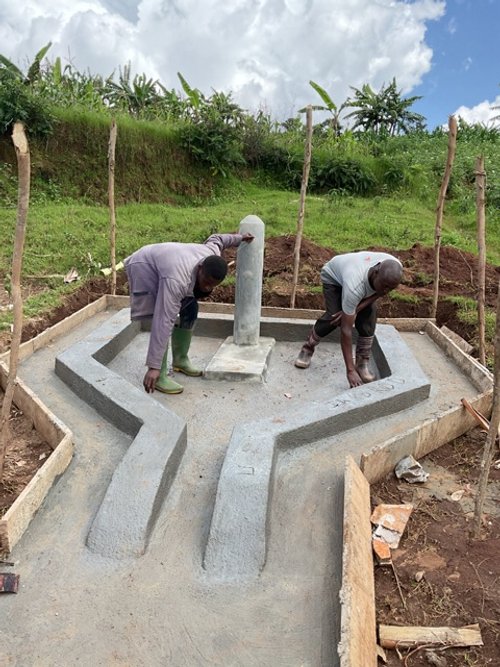BUILDING CLEAN WATER SYSTEMS
Clean water is foundational to community health and economic growth. But the systems must work long-term to provide lasting change. Our systems employ a low-tech, sustainable approach to water system constructions that is simple but effective, both in the short term and the long run.
Here’s how our systems work:
Water is captured from a hilltop spring source before it can become contaminated. It is filtered in the collection chamber and uses gravity to flow onward. Entrenched PVC pipe carries water to tanks, and to multiple tap stands. Tap stands are strategically positioned within easy walking distance to schools, churches, community centers, and other central locations to maximize access points for residents. Water is available for free to all people regardless of the person’s tribe or religion.
Rendering of a typical water system during construction:
Economic growth & community investment
On average, we employ 100-110 local workers to help with the water system construction. The workers are all residents of the community, using their earnings to purchase additional livestock, repair homes, or send their children to school. Meet our project manager.
We also purchase supplies and materials locally, further boosting the community’s economy. The average Burundian family lives on less than $600 annually, so our infusion of work in the area aids locals in providing for their families and becoming productive members of their community. Hiring local workers for the projects also develops local knowledge for upkeep and maintenance, as the ownership of all water systems are turned over to the community upon completion. See completed water systems.








